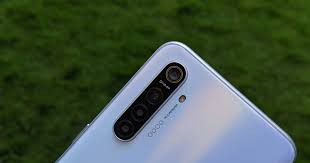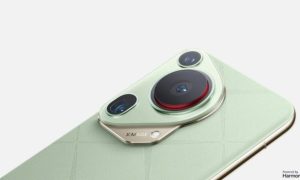Samsung has unveiled a 64-megapixel camera sensor for smartphones, making it the highest resolution sensor available for any camera up to medium-format professional ones. Given that we already had 48-megapixel smartphone cameras around, and with Qualcomm stating that it could theoretically support up to 192-megapixel image sensors, it was only a matter of time before the boundary would get pushed. While the new Isocell Bright GW1 image sensor does have a fair bit of interesting technologies that enable this high resolution performance, its significance actually lies in less technical, real world implementations. Here’s looking at how it works, and why it matters.
How it works
To pack in a staggering 64 million pixels into a sub-1”-type mobile imaging sensor, Samsung has used the smallest sensor pixel size on mobile cameras — 0.8µm. A pixel is the smallest particle in a sensor, which is actually a charged diode that receives and stores light and colour information. Typically, a larger pixel size is considered better for photography, as that allows each pixel to absorb more light, and in turn, render more information (details) in photographs, while faring better in low light photography.
In this case, however, Samsung uses a technology that it calls Tetracell. In essence, Tetracell ‘bins’ or packs together these pixels in 2×2 clusters, essentially creating one larger pixel that is twice the size of the actual pixel, i.e. 1.6µm. A typical pixel is sensitive to three basic colours of the visible spectrum — red, green and blue (RGB, in short). However, in this sensor design, each of the smaller pixels are sensitive to one of the RGB wavelengths. This allows the sensor to be specific to more minute variations of each fundamental colour, i.e. produce a wider range of shades and combinations of each of the red, green and blue colours. This enhances one crucial aspect of photography — dynamic range.
This essentially means, with such a sensor, Samsung can now produce a wider range of reds, oranges, yellows, blues, greens and any other combination shade, hence creating more details in conditions such as sunsets, or intricate, colour-rich festivals. While Samsung has not specified the colour combination of the pixel array, a typical pixel binning mechanism uses RGGB (red, green, green, blue) combination, unless specified otherwise. The smaller pixels also lead to higher accuracy of colours and lesser loss of light, hence reducing the aspects of light bleeding and loss of details.
Samsung also uses a technology called ‘Dual Conversion Gain’, which essentially uses the maximum charge capacity of a pixel to get the best utilisation of available light. This, in turn, improves low light performance — something that smartphones have often struggled with in comparison to dedicated cameras.
Why this matters
A big part of why this matters is because of Samsung’s re-mosaicing algorithm. This essentially reconstructs colour data captured by the entire sensor, to create a mosaic array of the entire image in front of the sensor. As a result, each actual pixel can then synthesise the data as individual ones. The result — actual production of a photograph as a 64-megapixel file, and not just as a software-reconstructed image.
The reason why this matters is because it is this resolution that can produce incredible details in large images, used typically in professional outdoor advertising and other high-resolution printing tasks. The new sensor will be capable of producing 64-megapixel files while retaining most of the details, dynamic range and colour balance in uncompressed file formats, as long as the image signal processors (ISPs) can support such high scales of information (such as in Qualcomm’s latest chips).
Furthermore, Samsung further improves the low light capability with Dual Conversion Gain, hence allowing elements such as mechanical and optical stabilisation while shooting in very poorly lit conditions. This will also help in videography too, and with the ultra high resolution at hand, even the crop on the sensor will not hinder high resolution videography performance. In easier words, this brings smartphone photography another step closer to the performance of dedicated cameras.
It remains to be seen when Samsung rolls out the Samsung Isocell Bright GW1 sensor to its smartphones, or whether other OEMs begin sourcing from Samsung soon. The results, at least in theory, should be quite exciting, and we cannot wait to see real-life results from this insanely high resolution sensor.
For more updates: Like us on Facebook and follow us on Twitter & Instagram



































